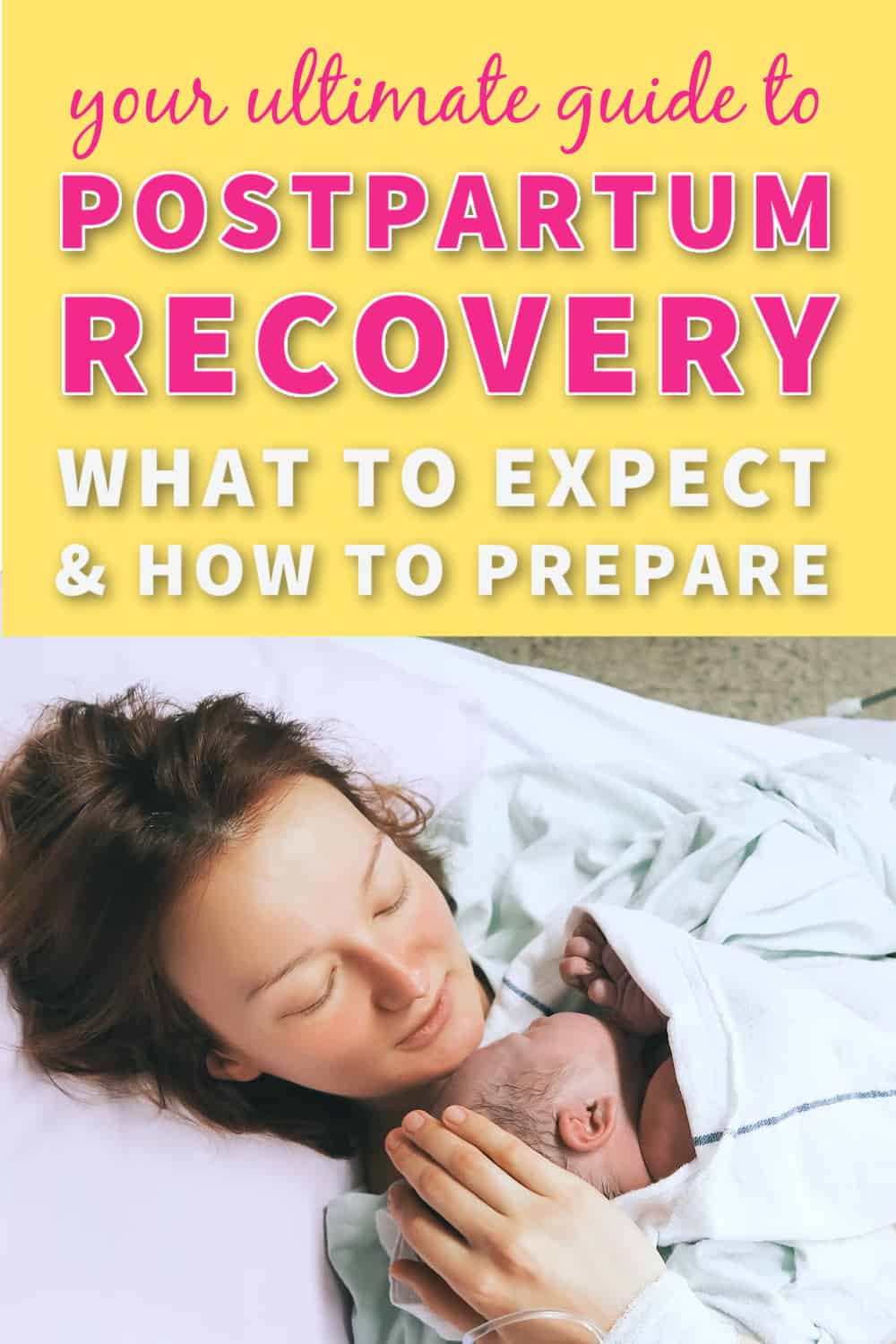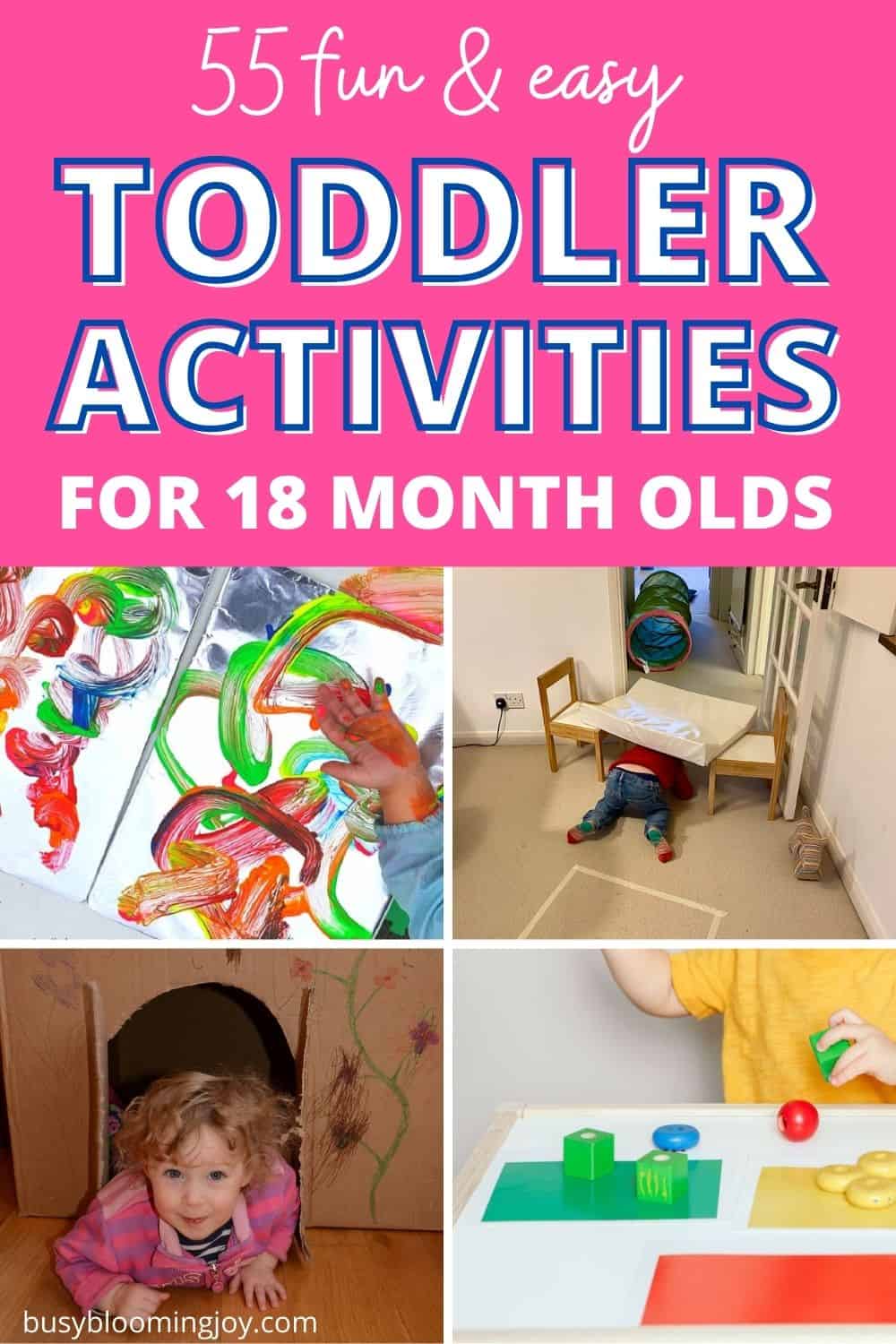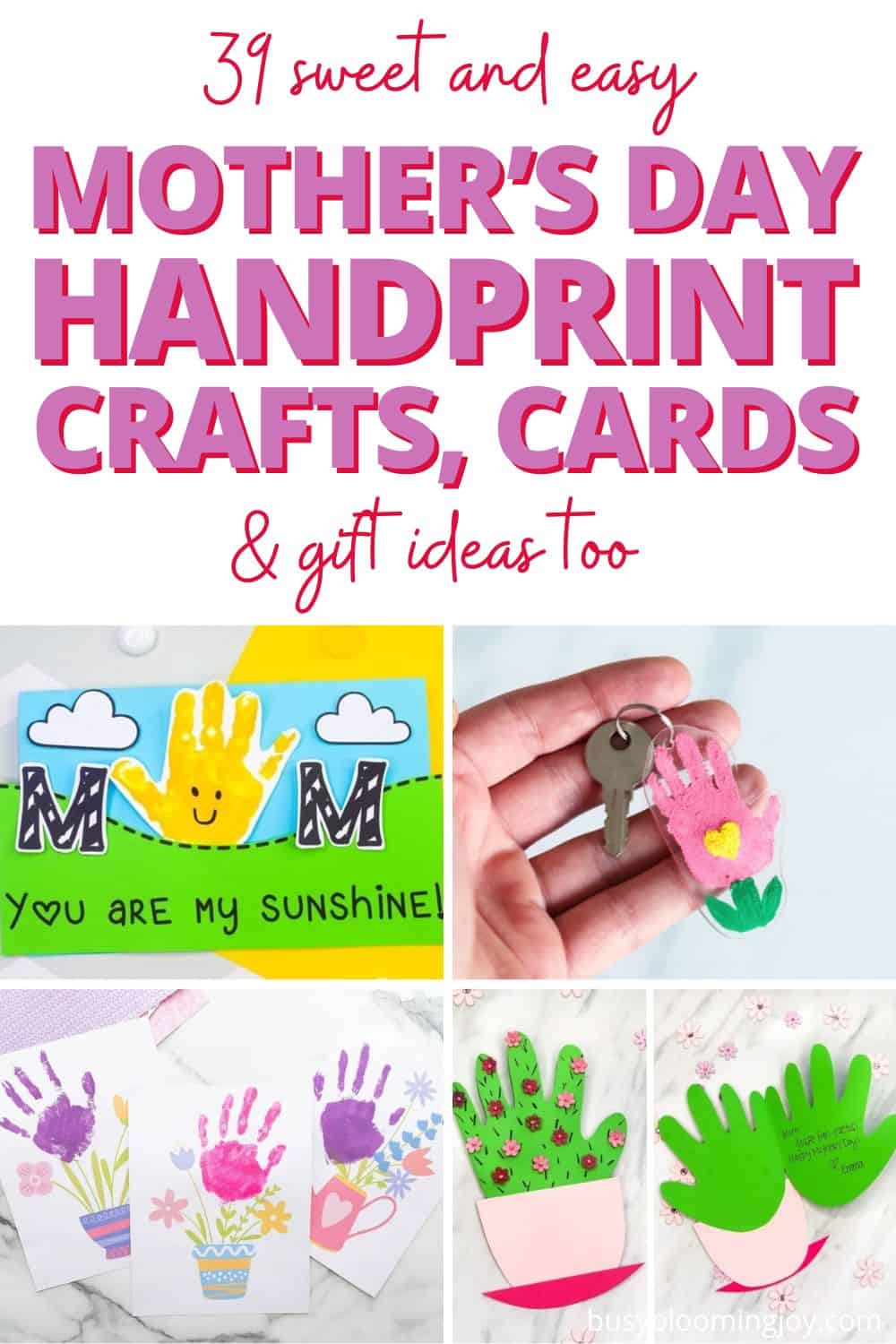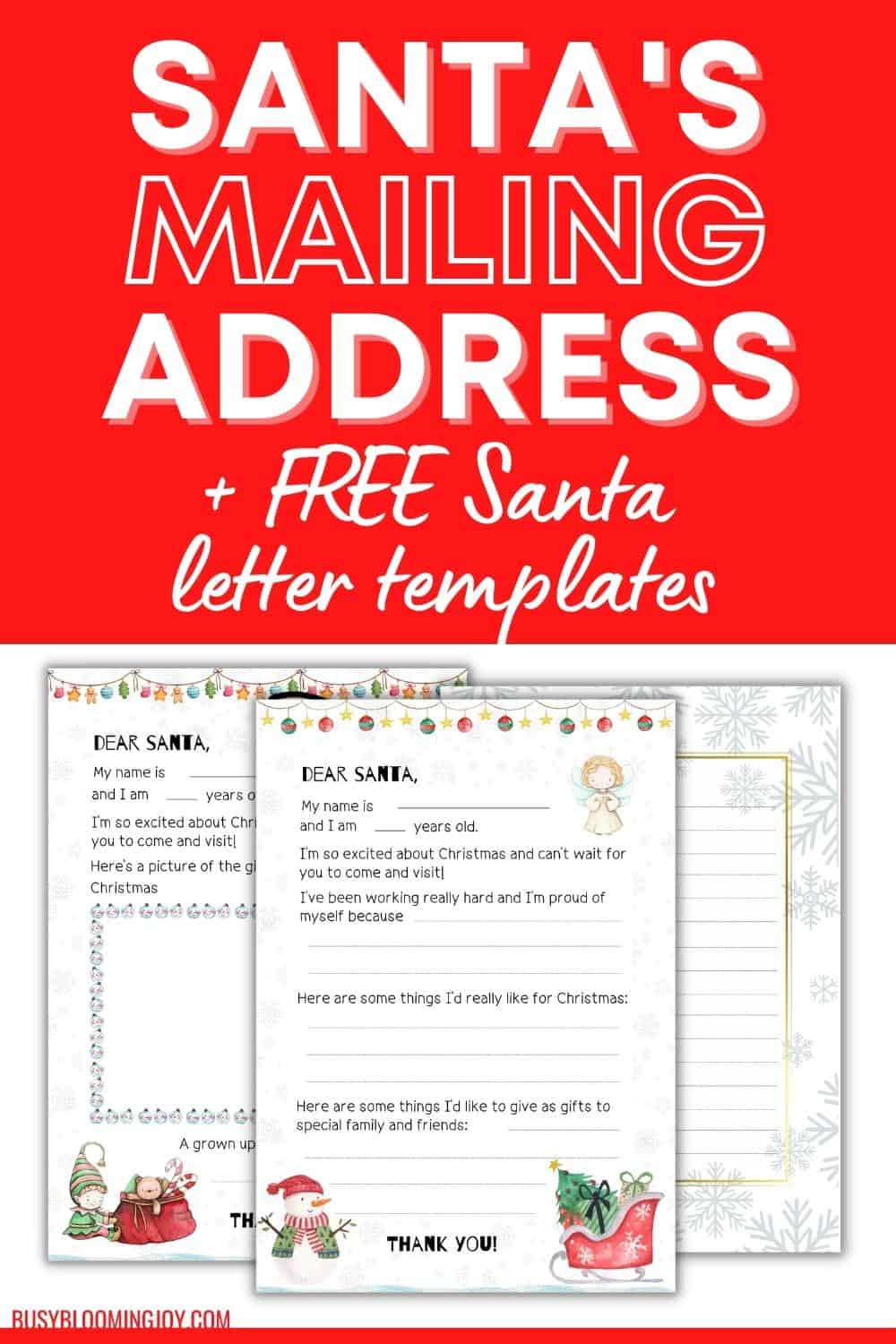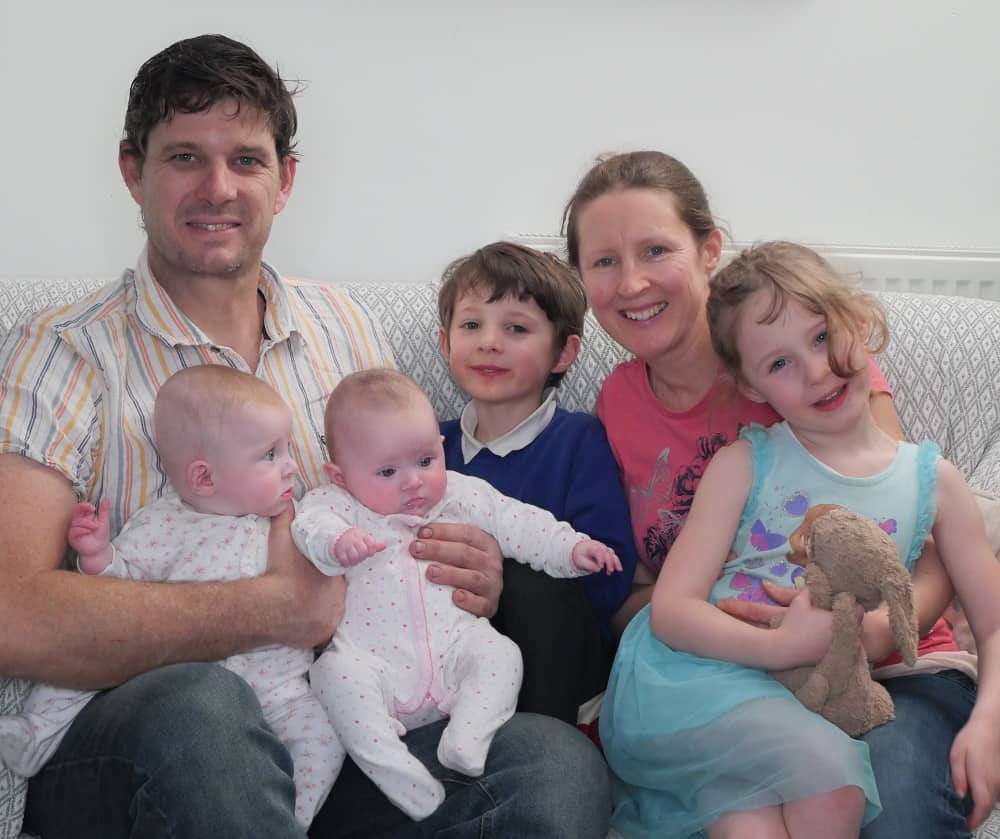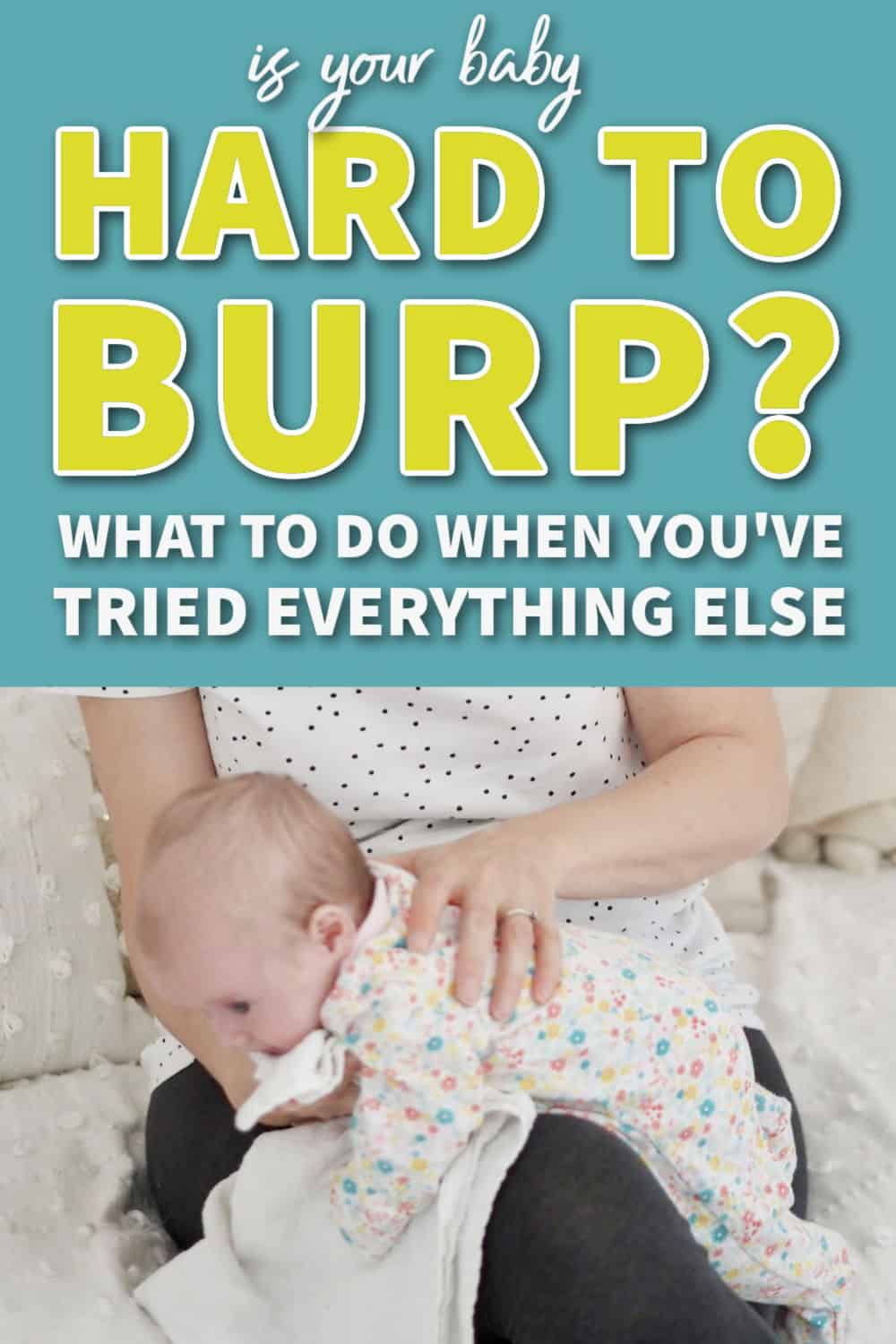The best way to heal up quick and sail through postpartum recovery is to prepare body and mind before birth. But maybe planning just ain’t your thang (guilty); babe in arms you’re suffering all sorts of discomfort. Got you covered too.
Read on to learn about your postpartum body and how best to deal with all that messiness and pain (aka all those delightful postpartum symptoms).
If you thought pregnancy was a time of big change, think again! Nothing will quite prepare you for those first few weeks and months as a new mom postpartum. I can’t even think of a word that accurately describes how humungous the change is. (So I unexcitingly just used “humungous”.)
The focus of this post is to prepare you for postpartum recovery and a speedy one at that. You’re probably tentatively and anxiously wondering what’s it all going to feel like “down there”. There will be no sugar-coating so I hope you’re feeling brave.
But don’t worry, along with all the very many undesirable side effects of popping out a baby, in this post you’ll also find ALL the tips you need to heal up your postpartum body.
So you can get on with enjoying that little human that will undoubtedly turn out to be the biggest love of your life. (Yup, even if you’re not into babies and are somewhat nervous about being a mom – that was me – you will love that screaming, pooping squidgyness with a love you never knew existed.)
Included in these recovery tips are some postpartum essentials; there really are some magical lotions and potions you need to get your hands on that will both help you stay comfortable and fast track your recovery. These will make-up your postpartum recovery kit or care box. (So you’ll also find these products grouped together in the section headed, “Postpartum care kit & essentials checklist”.)
Before I go any further, I want to make it clear that these postpartum recovery tips and recommendations are geared toward vaginal deliveries of full-term babies and recovery after normal delivery. C-sections will be referred to occasionally, but that’s not the focus of this post.
This post contains affiliate links. If you click on one and make a purchase, I may receive a commission at no extra cost to you.
Table of Contents
ToggleHow long does it take to recover after delivery?
The “postpartum period” refers to the first 6 weeks after birth. Hopefully, a lot of your postpartum recovery will happen within this time, but don’t expect everything to be totally back to normal for a long while after.
Despite the postpartum recovery tips that follow, in many respects, it’ll take as long as it takes. Your postpartum body has been through a lot; stressed and stretched in all respects, from pregnancy through to delivery. Every birth experience is different, every mom recovers at a different rate and experiences slightly different postpartum symptoms.
So if you’re wondering how long it’ll take to “get your body back?” And if it’ll ever be the same? One thing to be certain of is this: your postpartum recovery timeline will be unique to you.
However, there are a few guidelines on recovery time, dependent on your delivery experience.
How long does it take to recover after a normal vaginal delivery?
Recovery after normal delivery tends to be a little quicker than c-sections. If you didn’t tear, the soreness should go away fairly quickly and things should feel a lot more comfortable about 3-4 weeks postpartum.
How long does it take to heal after giving birth with stitches?
If it was a normal delivery and you did tear, it could take as long as 6 weeks for everything to heal up, although the soreness should start to ease a lot earlier.
How long does it take to heal after a c-section?
It’s important to remember that you went through major surgery if you had a c-section. Your postpartum recovery will take a little longer and on average it’ll take around 6-8 weeks
If you’re still sore 4 months after giving birth it’s definitely worth booking an appointment with the doctor.
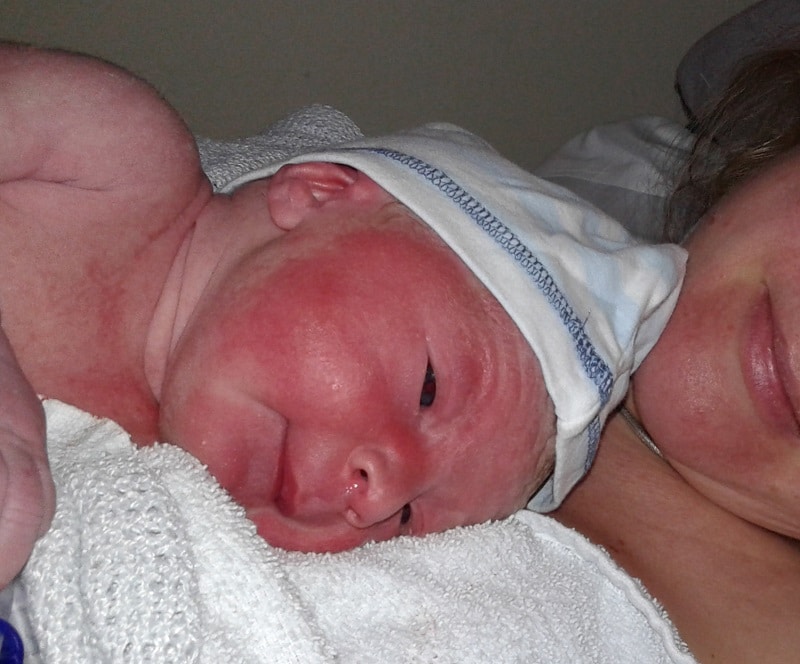
Postpartum symptoms & how to deal with them
Your body goes through a lot of changes during pregnancy and just as many after delivery. While those during pregnancy happen gradually, your body will feel very different all of a sudden, having pushed a baby out. (No real surprise, right?)
On the positive, you’re going to feel much lighter and less like you’re going to knock something over every time you turn around. But you’re probably still going to look and feel around 6 months pregnant (believe me, that’ll be the least of your worries!)
So, here is anything and everything you can expect after delivery – fingers crossed you won’t suffer all of these, I didn’t. Following each postpartum symptom are my top tips for a speedy and comfortable (as possible) postpartum recovery. The best postpartum products are included (these are all affiliate links), postpartum essentials that’ll make up your postpartum care kit (also summarised later on).
Vaginal bleeding
After you deliver your baby, you’re going to bleed – a lot. Postpartum bleeding or “lochia“, normally lasts 6-8 weeks. (I seemed to get lucky with the worst of the bleeding over by 3-4 weeks.)
It will seem like a very heavy period, with the heaviest flow occurring the first 3-10 days after birth and then it will begin tapering off. It will go from being red…to pink…to brown…to yellowish-white.
You will likely see clots and bits of tissue. During this time, tampons are off-limits, so you’ll be using thick, absorbent maxi pads and then gradually transitioning to regular pads. If you bleed through more than one pad every hour in those first few days, call your doctor to make sure you aren’t experiencing a postpartum hemorrhage.
Things you can do to prepare:
#1 Stock up on pads – maxi pads for the first 2 or so weeks and regular pads for another month or so

#2 Buy some postpartum pants – I bought some Granny style over-sized black knickers, knowing they might get thrown away after the end of the postpartum period. (They didn’t, they’re still around, but I’m pleased to say are too large now.) Or, for zero washing and maximum convenience go with some postpartum disposable underwear.
Vaginal & perineal soreness & discomfort
The perineum is the area between your rectum and vagina. During labor and vaginal delivery, it stretches, and it can even tear. That sounds a little drastic but with everything else going on, but believe me, you’re probably not going to even notice.
The doctor or midwife may decide that an episiotomy is necessary to help you birth your baby. This is a small cut of the perineum and vaginal wall that enlarges the vaginal opening. Depending on the size of the incision or tear, you may need a stitch or two after. Again, as horrible as this sounds, it isn’t much to worry about – you’re going to want to do anything to get that baby out!
It’s safe to say that no matter how your vaginal delivery goes, all your delicate parts are going to feel even more delicate; stingy, swollen, sore and extremely sensitive.
Luckily, this soreness and discomfort in the nether regions didn’t last too long for me with both my babies; even with the tearing and stitching I received after baby number 1, by week 3 everything had calmed down hugely.
Things you can do to help:
#1 Use homemade witch-hazel “padiscles”
Oohh, these things are the best to ease postpartum recovery from vaginal and perineal soreness. Following the advice of the midwife running the antenatal class we went to, I already had a stash of these in the freezer.
A “padsicle” is simply a frozen sanitary pad doused in witch-hazel water (a natural astringent and cooling agent). You don’t want to completely soak the pad, otherwise it won’t do it’s other job: absorb all that postpartum bleeding.
Just pour or spray some witch-hazel water (alcohol-free) over a maxi pad, wrap and freeze.
This padsicle recipe from Healthline.com also suggests adding aloe vera gel to the sanitary pad, but for me, the witch-hazel alone worked a treat.
Update: these instant cold therapy maxi-pads look well worth a try for when you’re out and about. They provide 20 minutes of cooling therapy, without the need for a freezer. (I haven’t used them but they’ve got rave reviews on Amazon.)
#2 Take a postpartum “sitz” bath
A “sitz” bath is just a funny term for a shallow bath to sit and soak in. You can try hot or cold water, depending on what you find most effective and comfortable. The idea is to gently clean and comfort all that soreness, which will be a big help to your postpartum recovery.
Add some Epsom salts to help reduce swelling, prevent infection and help healing and lavender essential oils, for anti-bacterial and anti-fungal properties (and a wonderful smell!)
(More on postpartum sitz baths here.)
#3 Use a cold pack on your perineum or sit on a donut-shaped cushion or pillow
#4 Take an over-the-counter pain relief
Regular strength pain killers are fine even if you’re breastfeeding (source) but if you’re unsure, please seek professional medical advice. If you’re not breastfeeding you can go for something stronger.
#5 Help prevent infection
Wipe from front to back or invest in a peri bottle so you can give the whole area a good clean in as gentle a way as possible.
Postpartum constipation
Unless, by some miracle, you managed to steer clear of any pain relief during birth (hats off to you if you did!), constipation is another common symptom postpartum, immediately after birth, in fact, up until you have your first poop. Pain-relieving drugs and blockers (i.e. anesthetics) can slow everything down and block you up.
Then there’s the fear factor that tells you consciously and subconsciously to hold it all in, especially if you had a tear or episiotomy. The last thing you want to do is strain when having a bowel movement and put pressure on those sore bits. Let’s just say you’ll be pleased when you’ve got the first one out the way! Some tips to help do just that.

#1 Eat plenty of fruit & veg and drink plenty of water
You’re probably going to have the hunger of a bear after hibernation, but make sure to include plenty of fruit and veg and other fiber sources in your diet to keep things moving down there. Store-bought fruit smoothies were my go-to.
#2 Try a stool softener
If you’re worried about even sitting on the toilet, stool softeners are a must. You can take them as long as you need while everything is healing up.
Hemorrhoids
Hemorrhoids are common during and after pregnancy due to the pressure placed around your anal area. They’re swollen veins that can hurt and even bleed (you’ll notice the blood when you wipe). They can also be itchy. I suffered from these big-time but they cleared up very quickly and without any medication.
Things you can do to help:
#1 Witch-hazel padiscles and postpartum sitz baths
These are the way to go here too, both to provide relief and help healing. If you skipped ahead, go back to the first section on perineal and vaginal soreness for all the details.
#2 Use this cooling and soothing healing cream
It provides instant relief and aids recovery.
#3 Help ease any postpartum constipation
Straining and pushing when you need to go is going to aggravate any hemorrhoids and make them bleed. Of course, you’re not going to want to strain soon after delivery because of all the soreness, but make sure you’re following the tips to relieve any constipation.
So lots of fiber in your diet and plenty of water. If that doesn’t do the trick, try stool softeners.
Breast engorgement
Your breasts will feel large and sore as your milk comes in. They can become solid as a rock and you’ll probably have bright blue veins all over them. (Typically, my husband was particularly fascinated by this change.)
If you breastfeed, the soreness usually goes away in a few days after you begin nursing frequently. If you’re not breastfeeding, the soreness will last for several days until your breasts stop making milk.
Things you can do to help:

#1 If breastfeeding, nurse your baby frequently
Feed frequently and “on demand” (whenever your baby wants) to reduce engorgement. (This is also essential to help build up your milk supply, since milk is produced on a supply and demand basis.
Related Post: Newborn Breastfeeding: The 5 Golden Rules For Success From The Start
#2 Massage your breasts to keep the milk flowing through the ducts
Not only does this relieve the discomfort but it helps prevent ducts from becoming clogged which could lead to mastitis (extremely painful and normally requires antibiotics).
#3 Hand express a little milk
Express just enough to ease the discomfort and prevent milk ducts from clogging. (Expressing too much will only stimulate your body to make more milk and exacerbate the situation.)
#4 Place hot or cold compresses on your breasts
Think warm towels, cold or warm packs or take a warm shower.
#5 Freeze cabbage leaves and place them inside your bra
I’m not sure if it’s the cabbage leaves themselves or just that they’re cold and fit neatly in a bra – but this research concluded that they are effective in reducing discomfort, so that’s all that matters. (Just don’t forget to take them out when you have visitors! Just me?)
#6 Wear nursing pads in your bra
This will help keep your clothes dry if you leaking milk between feedings
#7 If you’re not breastfeeding, wear a supportive bra
You want to avoid your breast tissue stretching and reduce the possibility of permanent sagging!
Nipple pain
If you’re breastfeeding, you’ll likely experience nipple pain for the first few days; although tiny, a newborn can have a pretty vice-like grip when latching. (Enough to make my eyes water.)
But it should only be painful for those first few powerful sucks, NOT for the entire breastfeed. If it is painful all the way through, it’s highly likely your baby hasn’t got a good latch. (Don’t worry, this is very common, breastfeeding wasn’t an easy or natural thing for me, and I know I’m not alone.)
Regardless of how quickly you get the latching right, it’s all too easy to end up with cracked nipples. Which will then struggle to heal since you won’t be able to properly rest them…
Things you can do to help:
Two extremely important tips to help and prevent nipple pain, both for comfortable postpartum recovery and for breastfeeding success.
#1 Ensure your baby is latching correctly
A baby with a poor latch won’t be nursing effectively or efficiently. So if you don’t get this right, you’re going to have a fussy, irritable, hungry baby, as well as very sore nipples.
The video below has a great demo on how to get a good latch, but if you’re still struggling do seek help from a lactation consultant (yes, breastfeeding is that hard there is a whole profession dedicated to it, so there absolutely no shame in this).
For more info on how to recognize the signs of a good and poor latch and tips on how to get a good one, check out Golden Rule no. 1 in this post on how to ensure a successful start to your breastfeeding journey (the link should jump you straight there).
#2 Apply nipple cream after every breastfeed
Definitely, a case of prevention is better than cure so oil up those nipples after every feed and whenever else you remember. So from day 1 postpartum, or even prior to birth. The key is to do it BEORE any cracking occurs.
Don’t bother with anything but this lanolin-based nipple cream and consider buying two – one for your normal nursing spot at home and one for your diaper bag.
If you’ve ever misplaced your cream or don’t have it to hand, you can try massaging a little expressed breast milk onto your nipples and letting them air dry, but seriously, nothing beats that cream!
After birth pains (postpartum cramping)
Cramps after delivery are caused by postpartum contractions as your uterus shrinks back to its regular size after delivery. For me, it was no worse than period pain, making this the least horrible postpartum symptom of the lot! But they can be a bit more severe.
You will probably experience dull aching plus some sharper pains. Hormones released while breastfeeding stimulates postpartum contraction, so these birth pains often start or become stronger when you start to nurse.
Things you can do to help:
#1 Heat pads or a hot water bottle
For a simple and natural remedy for after birth pains a hot water bottle or heat pads might be all you need.
#2 Over-the-counter pain relief
If you feel the need, normal pain relief should do the trick. If not and you’re breastfeeding, check with your doctor for something stronger.
C-section incision
If you had a c-section remember then you had major surgery. Not only is your body trying to recover from being pregnant and delivering a baby, but at the same time, it’s trying to recover from major surgery.
Expect typical recovery time to take longer than a vaginal delivery and remember to stay on top of your incision cleaning and pain management (following your doctor’s advice) to help you heal as quickly as possible.
Walking and stairs will likely be painful for the first few days. I know women who would take stairs backward and others who would sit and scoot up the stairs one at a time (while dad held the baby).
Things you can do to help recovery and prevent infection:
#1 Move if and when you can
Even though it’s uncomfortable at first, it is important to move around and walk a little, gradually increasing how much you do according to your doctor’s advice and how you feel.
#2 Take good care of your C-section incision
Clean it gently once a day with soap and water and pat dry. Don’t gorge to apply any prescribed ointments and follow any other instructions from your doctor.

The postpartum “pooch” (& a strange downward pressure)
You’re going to have a bit of a jelly belly for several weeks or months postpartum, otherwise know as “mommy belly” or the postpartum “pooch” Remember how you’re going to look 6 months pregnant straight after birth? Yup, that’s how much extra belly there will be.
You’ll also feel a lot of postpartum pressure when standing; the weight of your body pushing strongly and heavily down.
For me, I found the action of going from sitting to standing the worst. It was a strange and alarming experience every time I stood up, that my lower half wasn’t going to come with me – all the bits immediately below my knicker line seemed to lag behind.
Sounds odd? It felt very odd. Every time I got up, it gave me a bit of a fright!
This is, of course, because all those muscles and ligaments were so stretched by pregnancy and take a while to tighten up (and it can be a really long while…)
Then there’s the simple act of getting in and out of bed! You’re going to have to figure out how to lay down after delivery – a helping hand is the best option if one is available.
What you can do to help:
#1 Try a postpartum recovery belt
Just like in the old days, wrapping yourself tightly across your flabby bits is the way to go. Luckily we’ve moved on from corsets to postpartum recovery belts or belly bands. Not only will this help speed up your postpartum recovery in the belly area but will also make you look (and feel) a lot more normal.
#2 Gentle exercise when you can
You’re going to have to get up off the couch, into bed and out again, so you’ll be exercising and helping tighten everything up without even realizing. When you’ve had the all-clear from your doctor etc you can ramp up this up to a brisk walk.
Postpartum incontinence or “stress incontinence”
There are several things you’re going to want to avoid postpartum so you don’t accidentally pee your pants. Laugh, let your toddler climb on you, try to “hold it in” when you need to go and even, 1 year after birth, bounce on the trampoline!
For some, postpartum incontinence hangs around for what seems like forever, but eventually you should recover from it.
What you can do to help:
#1 Kegels
During the postpartum recovery period (those first 6 weeks) just concentrate on doing “kegels” (contract and relax the muscles that you use to stop peeing mid-flow). Ideally, you should start doing these in the second or third trimester (i.e. a long time before birth), daily whenever you remember.
Night sweats and shakes
Your body will be going through a massive and sudden hormonal shift from growing a baby to shrinking the uterus and producing milk. It’s normal to experience night sweats and shivers for several days to a few weeks.
What you can do to help:
I put down an extra (folded in half) sheet under where I slept and used fewer blankets. You could also change your sheets more often if you prefer, but I was trying to be conscious of yet more laundry workload.
The sheer exhaustion and “mommy brain”
The hormones, the labor, the birth, the sleepless nights… all of which can lead to forgetfulness and feeling like you’re a complete scatterbrain. The term is actually “mommy brain” and is a very real phenomenon. It can even start during pregnancy. (Doesn’t motherhood come with the most wonderful side effects?!)
Apparently, it improves over time but I’m not so sure! My two are now 3 and 4 and I’m still hopeless in the memory department…
However, it isn’t all bad. According to this research, your brain also shows positive changes postpartum that help you to bond with and love your baby, as well as help you make good maternal decisions. So if you’re worried you might not have that maternal instinct, don’t worry you will by the bucketload once baby arrives.

Things you can do to help:
#1 Get as much rest as you can
Try to sleep or rest as much as possible, or at the very least during at least 2 of your baby’s naps. Let the chores go as much as you can.
#2 Accept help, ask for help
No one can read your mind, so speak up for what you need: meals, errands, even just holding your baby while you have a shower, take a nap or just get a mental break. And if someone offers help, don’t hesitate. If a friend wants to visit and asks if you need something, say yes!
#3 Enroll your partner in some baby jobs
Not only does this take the strain off you, it gives him the opportunity to bond with baby and feel more involved. This may take some letting go on your part, but it’ll be good for all of you.
#4 Write down lists and reminders to help you remember things
Or leave yourself voice notes on your phone.
#5 Eat nutritious foods
Have healthy snacks to hand and try to eat proper meals. In addition, keep well hydrated, especially if you’re breastfeeding.
#6 Give yourself a break
Let go of expectations to keep up with things like you did pre-baby. The first few months postpartum you need to focus on recovery, adjustment to your new life, enjoying and bonding with your sweet baby.
Feeling stressed and overwhelmed
Babies don’t come with instruction manuals, so every new parent enters a steep learning curve right out of the gate. It’s natural to feel overwhelmed and stressed at first as you care for your baby. I remember feeling this huge burden that I should automatically know what to do, that it would all come naturally (which it didn’t, by the way).
Things that can help:
#1 Talk to your partner and let him know how you feel
I stressed big time about most things! My husband (being the laid back man that he is) took everything in his stride. Until I told him, he really was clueless as to how stressed I really was.
#2 Find some “new mom” friends
Meeting and chatting to others going through the same things as you will help tremendously.
#3 Get in some activity every day
A little gentle excercise helps on so many fronts when it comes to postpartum recovery. Start as soon as you’re physically able to, even if it’s just a short walk outside (a circuit of a small garden was my first “activity”).

Postpartum blues and postpartum depression
Postpartum blues (aka “baby blues”) are feelings of sadness that some women experience in the first couple of weeks after delivery. They’re caused by the massive change in your hormones but usually go away on their own as your hormones level out.
Postpartum depression or PPD is much more extreme. Symptoms include strong feelings of sadness, helplessness, severe anxiety and extreme tiredness.
PPD can last a long time, make it hard for you to care for your baby or yourself and needs medical treatment. Like any form of depression, there is absolutely no shame in PPD. It’s fairly common, affecting up to 1 in 4 new moms.
NB: If you’re concerned about hurting your baby or yourself, seek help urgently.
Things you can do to help:
#1 Don’t suffer alone, talk
Getting out the house for a change of scene and some fresh air is number 1. But this can be a tough task with a newborn in tow and if you’re feeling down, leaving the house might be an unrealistic ask. But you will need that human company. You’re going to need to talk to friends, family or other moms. Ask them around or at the very least pick up the phone.
#2 Talk to your doctor
If you recognize symptoms of PPD or if you’ve been feeling low for longer than 2 weeks, an appointment with your doctor is a must. There’s nothing to be embarrassed about and medical treatment could be the only way to help you feel better
#3 Avoid overconsuming alcohol
The occasional drink is fine, even if you’re breastfeeding, since only 2% of alcohol will reach your milk. (As general rule, if you’re safe to drive, you’re also safe to breastfeed – for more on alcohol consumption while breastfeeding check this article from CDC.gov). So if a drink here and there helps you relax, then go for it.
But don’t drink too much.
Dealing with a newborn on a hangover won’t be fun, not to mention excessive alcohol can disrupt sleep and dehydrate you so is likely to leave you feeling lower than before.
How to prepare for postpartum recovery
There are lots of fun things about preparing for the arrival of your newborn – decorating the nursery was my favorite – but don’t forget the important task of preparing for postpartum recovery. Like a lot of things in life, decent preparation will make the world of difference – to your healing postpartum body and to your mind (because it’s one hell of an adjustment).
Prepare practically to minimize workload when baby arrives
Like any form of recovery, postpartum healing requires rest. Rest, rest and more rest. This will be so much easier if you’ve taken steps to minimize your workload for those first few weeks, as far into the 4th trimester as possible.
Firstly, what you can do to get ahead on any jobs or admin that will fall in the first few months postpartum? Secondly, how can you minimize day-to-day chores?
No. 1 Get ahead on admin
- Get all outstanding and upcoming bills paid
- Shop for any birthdays in advance
- Get any medical or dental appointments out the way
- Baby due any time after September? Write all your Christmas cards now!
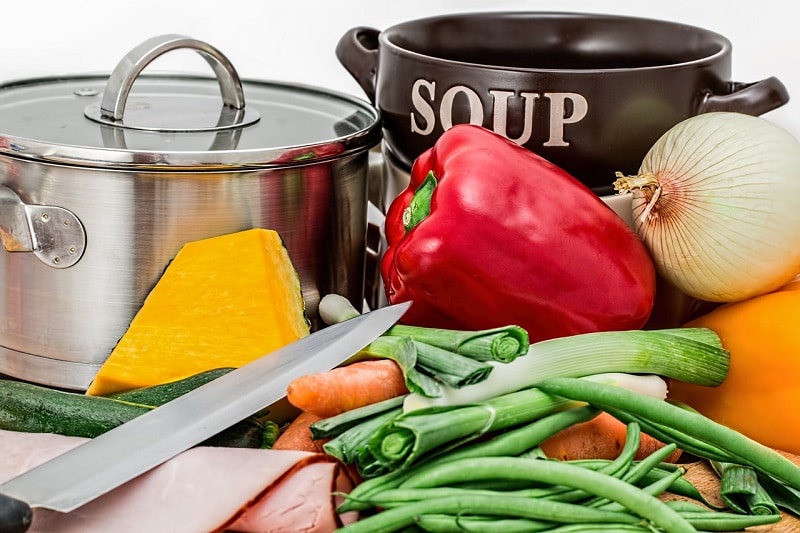
No. 2 Cook, stock up the freezer and pantry
Even if you love cooking, there are going to be days when you simply don’t have the energy or motivation to cook. Think how many of those postpartum symptoms are uncomfortable, painful and simply suck the energy out of you. Of course, you need to stick to a healthy diet as much as possible, so stocking up your freezer with healthy meals is probably the most important thing you can do. Start preparing a month or so ahead of your delivery, batch cooking and freezing.
Or if you’re budget will stretch, look into services that deliver freshly prepared meals to your doorstep.
In addition, be sure to stock up on pantry staples as well as healthy store-bought snacks that you can eat one-handed (baby will probably be occupying your other one), though not too many if you know they’re going to eaten before baby arrives!
For more ideas on how to prepare practically for the first weeks postpartum, check out 15 Must-do Pre-baby Tasks to Make New Mom Life a Breeze.
Prepare a list of professional help contacts
I am not kidding about “mommy brain”. Make up a list of important contact names and numbers while your brain is still functioning well! So your pediatrician, OBGYN and pharmacist as well as a few you may not have even thought about yet: local lactation consultant, mom support groups, mom and baby groups (look into these now if you haven’t already).
Create a postpartum recovery kit
There are a few things you’re going to want to have on hand when you get home from the hospital or even straight after delivery. You want to avoid having to go to the store on your way home or frantically trying to find a pharmacy open out of hours when one of those postpartum symptoms rears it’s ugly head…
This is just a summary of all the products mentioned earlier in this post, in the tips following each of those postpartum symptoms:
- Some kind of postpartum underwear – large high-waisted granny knickers or disposable underwear.
- Alcohol-free witch-hazel and maxi sanitary pads to make your witch-hazel padsicles.
- Postpartum ice maxi-pads – which provide 20 minutes of cool pack relief without a freezer
- More maxi sanitary pads for normal use in the first few weeks postpartum (when you no longer need the cooling power of frozen pads or you’re out and about).
- These lighter flow pads for a few weeks down the line.
- Epsom salts and lavender essential oil for a sitz bath.
- A stool softener if you’re very sore and you’re a bit blocked up.
- A Peri bottle – to rinse off after going to the bathroom while that area heals.
- Gel packs for hot or cold use – to help relieve discomfort anywhere and everywhere!
- Cooling and soothing cream for hemorrhoids
- Over-the-counter pain reliever to help with any overall aches and perineal pain. (Regular strength pain killers are fine if you’re breastfeeding (source) but if you’re unsure, please seek professional medical advice.)
- Nursing pads – these help your clothes stay dry when your nipples leak.
- A lanolin-based nipple cream to prevent and treat cracked nipples – only necessary if you intend to breastfeed
- A postpartum recovery belt – to help that mommy pooch and make you feel a little more human
You may not need to buy all the above – you can do a bit of picking and choosing, but do your research now and have things waiting in your Amazon shopping basket so you’re ready to purchase if you need.
For my full recommendation of products and other things to go in your recovery kit, check out this post:
My top tips for postpartum recovery
In addition to preparing for your postpartum recovery, here are my top tips for recovering as quickly as possible.
#1 Get as much rest as possible
I’ve mentioned this already, but here it is again, it’s that important. Your body needs time to rest postpartum. Even if you’re used to being on the go and are the busy type (guilty), prioritize resting.
Adjust your priorities to the bare minimum: caring for your baby, fueling your body in as healthy was as possible and resting or sleeping if possible.
Related Post: When Do Babies Sleep Through the Night? 20 Normal Moms Share Their Baby Sleep Stories
#2 Accept help and ask for it
This one was so hard for me and I know I’m not alone. Women today are brought up to think they can do anything, everything and all at once – rightly so! But when you become a mother you really are thrown in at the deep end. No antenatal class, course, book or wise words from your mom can prepare your mind let alone your body for it.
But accepting help and asking for it is one of the best ways you can make the transition into motherhood easier and ensure a speedy postpartum recovery.
Don’t carry the entire weight of the household and caring for a tiny helpless human on your shoulders all while your body is still in recovery mode. And remember, every mom you meet has been through what you’re going through and will be more than happy to help if they can.
#3 Lower and let-go of your expectations
The one thing you are guaranteed is that you’re going to love that baby even more than you can imagine.
But everything else is likely to feel more difficult and potentially not at all natural (that was me). You will probably find the transition into motherhood different to how you imagined. And your ability to get all-the-things done exactly how you want, when you want, probably won’t be as you’d hoped either.
Let go of all these expectations.
Take each day as it comes. Don’t aim for perfect! Whatever that is or means to you.
#4 Set limits
Introducing your newborn to friends and family is such a special time and keeping a connection to others is so important. But for those first couple of weeks postpartum, don’t be afraid to say no to visitors.
Remember your priorities; to rest and care for your baby. If you know you desperately need to sleep and you’ve just got baby down for a nap and someone wants to visit, ask them if they can come later or another day.
Another limit could be to say no to unwelcome advice. This can be a tricky one; my mother-in-law loved to give her two cents…. because she’d had 4 children etc. While other moms can be a great source of useful advice, too much advice and unwelcome advice can be unhelpful, confusing and demoralizing. I know they’re probably only trying to be helpful, but if it’s not, then try to tactfully tell them so.
This is your baby and ultimately you and your partner (if he’s lucky?!) will decide how and what to do.
#5 Don’t miss any doctor’s appointments
It’s vital that you stay in touch with your doctor as you recover to make sure that everything is healing as it should. Your OBGYN is also a great resource to check in with regarding your emotions and adjusting to being a new mom.
If you had a c-section, make sure to go back on time to get your stitches out and check for any incision tenderness, pain or fever.
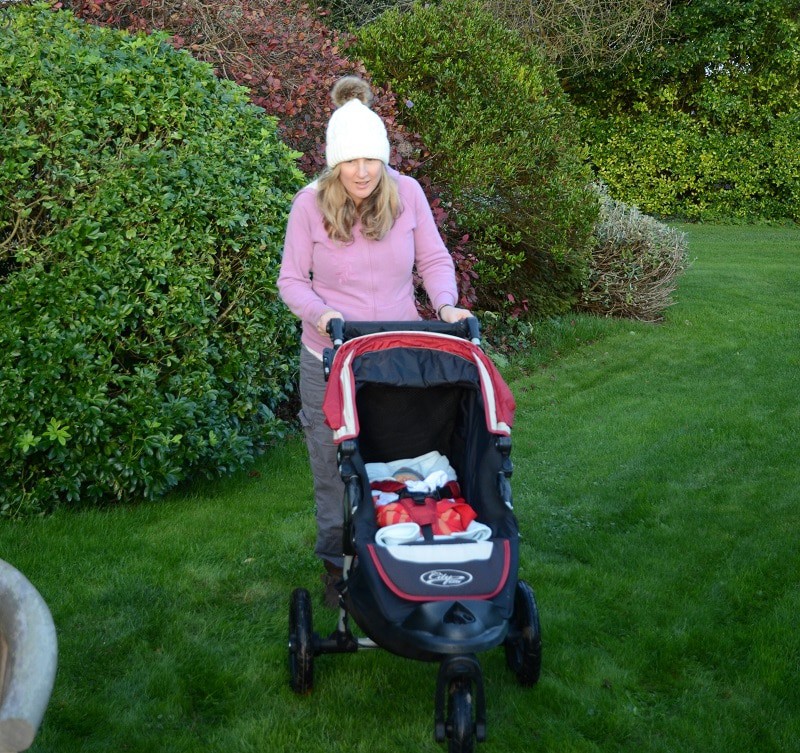
#6 Try to include some form of daily physical activity as soon as you’re able
Once you’ve got the all-clear from your doctor, physical activity is so important for your mental and physical health; it’ll help your postpartum recovery no end.
It’s all too easy to get into a slump, with nothing to leave the house for and no reason to get out your pajamas. Get out those pajamas!
Walking was my go-to: it didn’t require the hassle and potential stress of going somewhere public or even getting in the car. I also timed walks with the newborn sleep schedule I was starting out on (the buggy or baby carrier is a sure-fire way to get baby to sleep!)
Final thoughts on postpartum recovery
The birth of your baby will be life-changing, moving and probably overwhelming, especially if it’s your first. But hopefully, you will now know a little bit about what to expect from your postpartum body, how to deal with all the delightful after-effects of delivery and how to prepare yourself before the big day arrives.
Remember to rest, give your postpartum body a chance to heal and your mind a chance to adjust. If you have days where you do nothing but care for your baby and sleep, that’s a good thing.
Preparing for your postpartum recovery will help you to enjoy this special – and fleeting – stage with your new baby. It’s a time you’ll treasure, and, even if it doesn’t seem to at the time, it’ll fly by.
If you want to take a peek at some of the realities I faced adjusting to life with a newborn and some of the things that kept me sane, check out this post: Battling the 4th trimester? 6 harsh realities & the tips you need to stay sane


